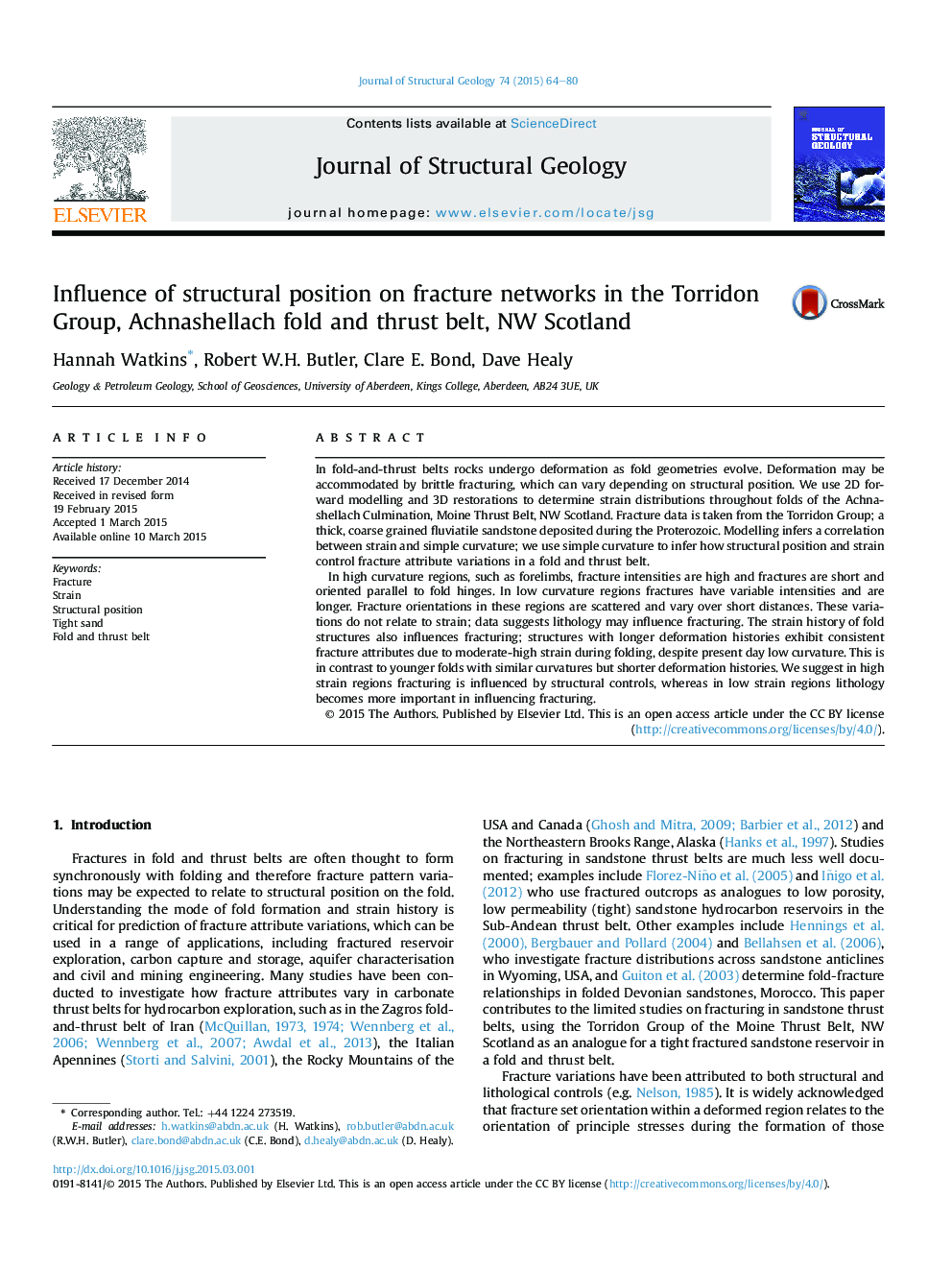| Article ID | Journal | Published Year | Pages | File Type |
|---|---|---|---|---|
| 6444716 | Journal of Structural Geology | 2015 | 17 Pages |
Abstract
In high curvature regions, such as forelimbs, fracture intensities are high and fractures are short and oriented parallel to fold hinges. In low curvature regions fractures have variable intensities and are longer. Fracture orientations in these regions are scattered and vary over short distances. These variations do not relate to strain; data suggests lithology may influence fracturing. The strain history of fold structures also influences fracturing; structures with longer deformation histories exhibit consistent fracture attributes due to moderate-high strain during folding, despite present day low curvature. This is in contrast to younger folds with similar curvatures but shorter deformation histories. We suggest in high strain regions fracturing is influenced by structural controls, whereas in low strain regions lithology becomes more important in influencing fracturing.
Related Topics
Physical Sciences and Engineering
Earth and Planetary Sciences
Geology
Authors
Hannah Watkins, Robert W.H. Butler, Clare E. Bond, Dave Healy,
